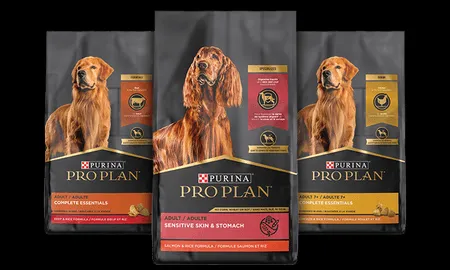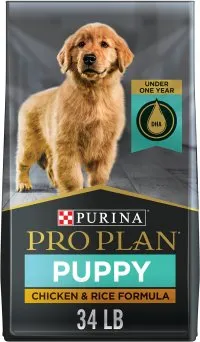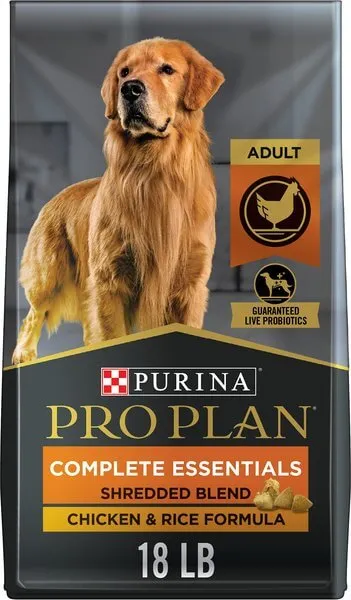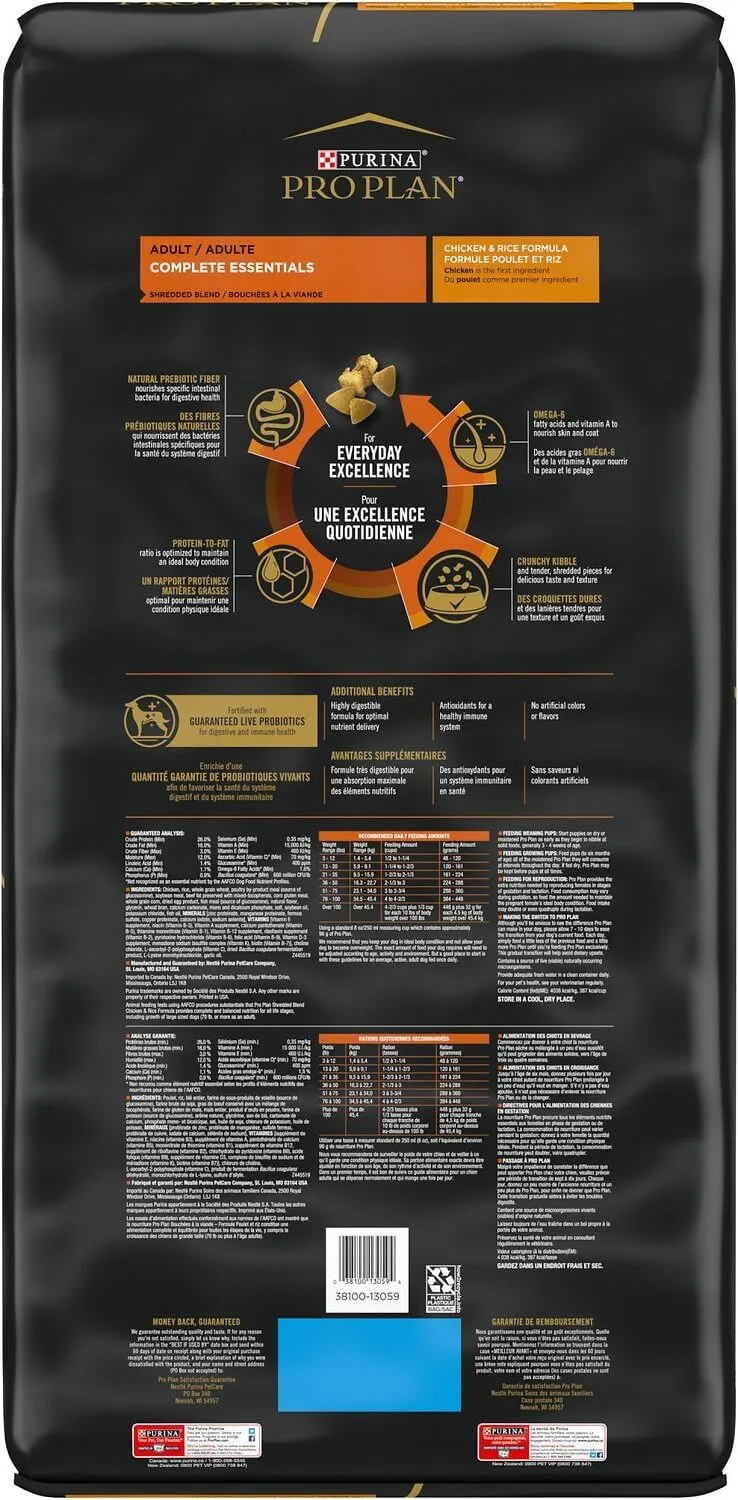Welcoming a new puppy into your home is an exciting time, filled with joy and new responsibilities. One of the most critical decisions a new pet parent faces is choosing the right nutrition, as it lays the foundation for a lifetime of health and vitality. Puppies require a specialized diet to support their rapid growth and development, making the selection of their food paramount. Among the myriad of options, Purina Pro Plan Puppy stands out as a frequently recommended choice by veterinary professionals and breeders alike. This comprehensive guide aims to serve as your dedicated Purina Pro Plan Puppy Dog Food Advisor, delving into why this particular line is so highly regarded and what makes it an excellent option for your growing canine companion. Understanding the nuances of puppy nutrition and the specifics of high-quality dog food, like the Purina Pro Plan Puppy line, can help ensure your furry friend gets the best possible start. If you’re considering the complexities of [homemade dog food for dogs with allergies](https://dogcarestory.com/homemade-dog-food-for-dogs-with-allergies/), understanding commercial options first can provide valuable context.
Understanding the Purina Pro Plan Family
Purina Pro Plan is a well-established and respected brand in the pet food industry, known for its science-backed nutrition and diverse range of formulas designed to meet the specific needs of dogs at different life stages and activity levels. The brand’s commitment to research and development has earned it a strong reputation among dog owners and professionals. The extensive Purina Pro Plan family includes several sub-brands, each tailored for distinct purposes: Purina Pro Plan Adult, Purina Pro Plan Sport, Purina Pro Plan Bright Mind (for senior dogs), and, importantly for our focus, Purina Pro Plan Puppy. While each sub-brand offers targeted benefits, the Puppy line is specifically formulated to address the unique nutritional requirements of developing puppies.
 Purina Pro Plan Dog Food Brand Logo
Purina Pro Plan Dog Food Brand Logo
Why Purina Pro Plan Puppy Stands Out
Purina Pro Plan Puppy is distinguished by its meticulous formulation, designed to support the intense growth phase of young dogs. This sub-brand is consistently mentioned by veterinarians and professional breeders due to its balanced nutrient profiles and commitment to developmental health. Each recipe in the Puppy line is verified for nutrient balance through live feeding trials, a gold standard in ensuring that the food not only meets but also effectively delivers the necessary nutrition for a puppy’s well-being. This rigorous testing approach reinforces the brand’s dedication to providing optimal nourishment for puppies.
Key features that make the Purina Pro Plan Puppy line exceptional include controlled calcium levels, which are crucial for proper bone and joint development in growing puppies. Imbalanced calcium can lead to skeletal issues, making this a critical aspect of puppy nutrition that Pro Plan addresses effectively. Furthermore, the line offers specific formulas tailored for small or large breeds, recognizing that puppies of different sizes have varying growth rates and nutritional demands. This customization ensures that a Chihuahua puppy receives appropriate nutrient density and kibble size compared to a Great Dane puppy. If you are exploring [homemade dog food recipes vet approved for large dogs](https://dogcarestory.com/homemade-dog-food-recipes-vet-approved-for-large-dogs/), you’ll appreciate how commercial brands like Purina Pro Plan offer specialized solutions for larger breeds right from puppyhood.
 Purina Pro Plan High Protein Chicken Puppy Dry Dog Food
Purina Pro Plan High Protein Chicken Puppy Dry Dog Food
Delving into Purina Pro Plan Puppy: Ingredients and Nutrition
The foundation of any quality puppy food lies in its ingredients. While specific formulas within the Purina Pro Plan Puppy range vary, they generally feature high-quality protein sources as primary ingredients. Protein is vital for muscle development, tissue repair, and overall growth in puppies. Common protein sources include chicken, salmon, and lamb, often listed as the first ingredient. These provide essential amino acids necessary for a puppy’s rapid development.
Beyond protein, Purina Pro Plan Puppy recipes incorporate a blend of fats, carbohydrates, and essential micronutrients. Fats, particularly omega-3 fatty acids like DHA (docosahexaenoic acid), are crucial for brain and vision development. Many Puppy formulas include fish oil or other omega-rich ingredients to supply these vital nutrients. Carbohydrates, often sourced from rice, whole grain wheat, or corn, provide the energy needed for a puppy’s active lifestyle and growth. While some of these ingredients might be considered controversial in certain dog food discussions due to common misconceptions, their inclusion in a balanced formula, when properly processed, contributes significantly to a puppy’s overall energy and digestive health.
Nutrient Profile for Growing Puppies
The Association of American Feed Control Officials (AAFCO) sets guidelines for pet food nutrient profiles, and Purina Pro Plan Puppy formulas are designed to meet or exceed the AAFCO nutrient profiles for “Growth.” This signifies that the food is complete and balanced for the nutritional needs of growing puppies. The typical dry matter nutrient content in these formulas showcases a balance aimed at optimal puppy development. Protein levels are typically above average, providing the building blocks for rapid growth. Fat levels are appropriate for sustained energy without promoting excessive weight gain, and carbohydrates fill the remainder of the caloric needs.
This careful balance is critical because puppies require more calories and specific nutrients per pound of body weight than adult dogs. For example, the precise ratios of protein, fat, and carbohydrates, along with essential vitamins and minerals, support not just physical growth but also immune system development and cognitive function. This is particularly important for pet parents who wonder [what is the best thing for dogs to eat](https://dogcarestory.com/what-is-the-best-thing-for-dogs-to-eat/) during their puppy’s formative months. The inclusion of live probiotics aids in digestive health, which is often sensitive in young dogs, and chelated minerals enhance nutrient absorption, making the most of every bite.
 Purina Pro Plan Adult Dog Food Overview*An example of the general packaging for Purina Pro Plan, demonstrating the brand’s aesthetic across its various lines.*
Purina Pro Plan Adult Dog Food Overview*An example of the general packaging for Purina Pro Plan, demonstrating the brand’s aesthetic across its various lines.*
Purina Pro Plan Puppy: Recipe Variations and Ratings
The Purina Pro Plan Puppy line offers a variety of formulations to cater to the diverse needs of young dogs. With approximately eight distinct recipes, the brand ensures that pet parents can find an option best suited for their puppy’s breed size, sensitivities, and specific developmental requirements. These variations often include formulas for small breed puppies, large breed puppies, and sometimes options targeting sensitive skin and stomachs, ensuring that even puppies with particular dietary needs are accommodated.
Across the Purina Pro Plan range, the Puppy sub-brand consistently receives high ratings from expert reviewers like the Dog Food Advisor. The Puppy line, in particular, often garners 4 out of 5 stars, reflecting its strong nutritional composition and suitability for growing dogs. These ratings are a testament to the brand’s rigorous scientific development and the quality of its ingredients, instilling confidence in pet owners seeking optimal nutrition for their young companions. The success of these tailored recipes underlines Purina’s understanding of canine nutritional science.
Manufacturing, Safety, and Recalls
When it comes to pet food, the source of ingredients and manufacturing processes are paramount for safety and quality. Purina states that 99% of all Pro Plan recipes, including the Puppy formulas, are made in the U.S.A. Furthermore, the company sources the majority of its ingredients from American suppliers, which can offer greater transparency and adherence to domestic quality standards. Purina also owns and operates 100% of its production facilities, allowing for strict oversight of the manufacturing process from start to finish. This level of control is a significant factor in maintaining product consistency and safety.
In terms of recall history, Purina, like many large pet food manufacturers, has experienced recalls over the years. However, specific recalls for the Purina Pro Plan Puppy line are not frequently reported, and the brand maintains a strong focus on quality control to minimize risks. It is always recommended for pet owners to stay informed about any pet food recalls through reliable sources. The Dog Food Advisor regularly updates its list of all dog food recalls since 2009, providing a valuable resource for pet parents. This vigilance underscores the importance of choosing a brand with robust safety protocols, especially when considering [homemade treats for dogs with kidney disease](https://dogcarestory.com/homemade-treats-for-dogs-with-kidney-disease/) where ingredient control is entirely in the owner’s hands.
 Purina Pro Plan Adult Dog Food Package Back*The back of Purina Pro Plan packaging, typically detailing ingredients and nutritional information for informed pet owners.*
Purina Pro Plan Adult Dog Food Package Back*The back of Purina Pro Plan packaging, typically detailing ingredients and nutritional information for informed pet owners.*
What Veterinary Professionals and Breeders Say
The strong endorsement of Purina Pro Plan Puppy by veterinarians and professional breeders is a significant indicator of its quality and effectiveness. These professionals rely on scientific research and clinical experience to recommend dog food, and the consistent recommendation of Pro Plan Puppy speaks volumes. The use of live feeding trials to verify nutrient balance, as mentioned previously, is a crucial factor in their endorsement. This method demonstrates that the food not only contains the right nutrients on paper but also performs as expected in real-world feeding scenarios, supporting healthy growth and development in puppies.
Positive feedback from actual users further reinforces the brand’s standing. For instance, Chewy customers rate Purina Pro Plan highly, with a significant majority stating they would recommend it to others. While many reviews pertain to the adult formulas, the general sentiment reflects satisfaction with the brand’s quality, palatability, and the visible health benefits observed in their dogs. This collective positive experience from both professionals and everyday pet owners provides a comprehensive picture of Purina Pro Plan Puppy’s reliability and efficacy.
Addressing Common Concerns for Puppy Owners
As a dedicated purina pro plan puppy dog food advisor, it’s essential to address some common concerns new puppy owners might have.
- Transitioning Food: When bringing a new puppy home, or switching from one food to another, a gradual transition is key. Mix increasing amounts of the new Purina Pro Plan Puppy food with decreasing amounts of the old food over a period of 7-10 days. This helps prevent digestive upset as your puppy’s system adjusts to the new diet.
- Feeding Guidelines: Always refer to the specific feeding guidelines on the Purina Pro Plan Puppy package, as they are tailored to the formula’s caloric density and your puppy’s anticipated adult weight. These guidelines are usually presented in a chart format, recommending daily portion sizes based on age and weight. Divide the daily amount into several small meals throughout the day (e.g., 3-4 meals for younger puppies, gradually reducing to 2-3 as they grow).
- When to Switch to Adult Food: The timing to transition your puppy from Purina Pro Plan Puppy to an adult formula depends on their breed size. Smaller breeds mature faster and may transition around 9-12 months of age, while large and giant breeds continue to grow for a longer period, typically transitioning between 18-24 months. Always consult your veterinarian for personalized advice on when to make this switch, ensuring your puppy continues to receive appropriate nutrition for their developmental stage. Understanding
[what type of meat is good for dogs](https://dogcarestory.com/what-type-of-meat-is-good-for-dogs/)is important, but providing that meat in a nutritionally complete and balanced formula like Purina Pro Plan Puppy is even more critical for growth.
Conclusion
Choosing the right food for your puppy is a foundational step in ensuring their long-term health and happiness. The Purina Pro Plan Puppy line, with its scientifically formulated recipes, emphasis on controlled growth, and endorsement from veterinary professionals and breeders, stands as a highly recommended option. As your trusted purina pro plan puppy dog food advisor, we highlight its commitment to balanced nutrition, ingredient quality, and rigorous testing through live feeding trials. By providing essential nutrients like controlled calcium for bone development, DHA for cognitive function, and probiotics for digestive health, Purina Pro Plan Puppy sets your young canine companion on a path to a healthy and vibrant life. Always remember to consult with your veterinarian to determine the most suitable formula for your puppy’s unique needs, breed size, and health considerations. Explore the various Purina Pro Plan Puppy options to find the perfect fit for your beloved new family member, ensuring they receive the best start possible.
References
- Association of American Feed Control Officials (AAFCO)
